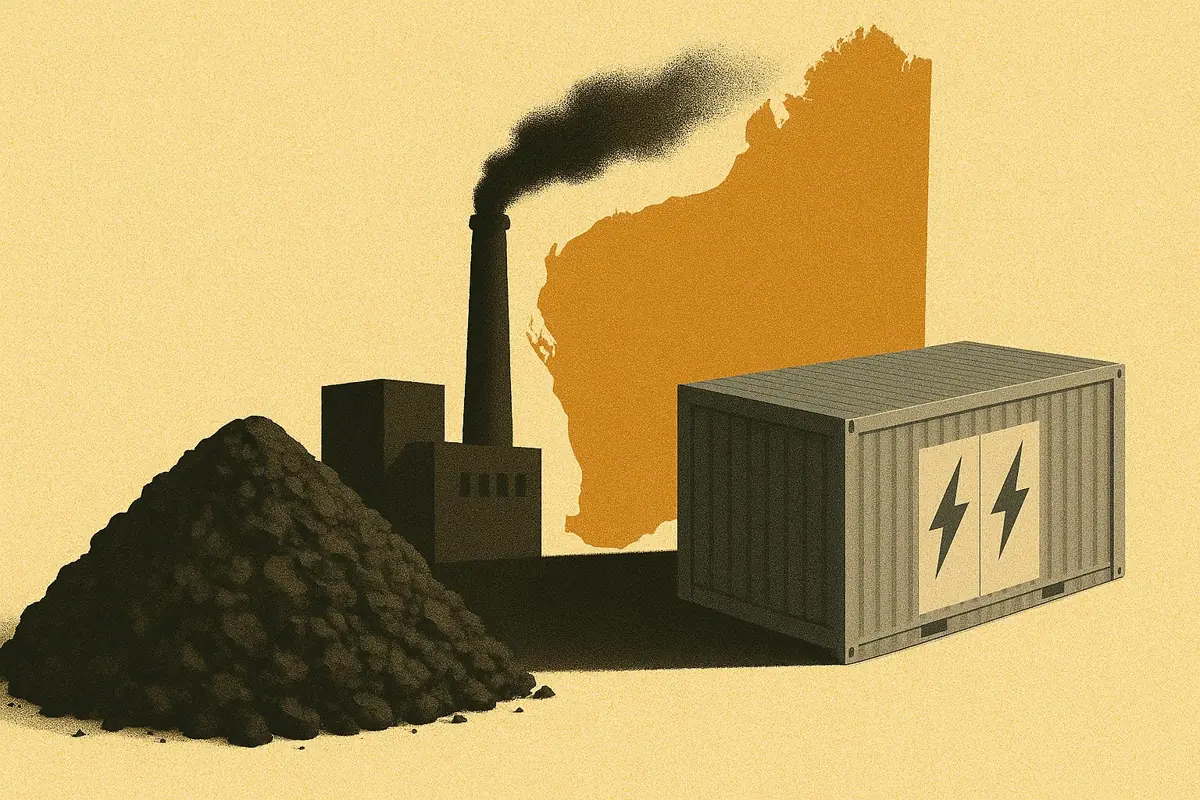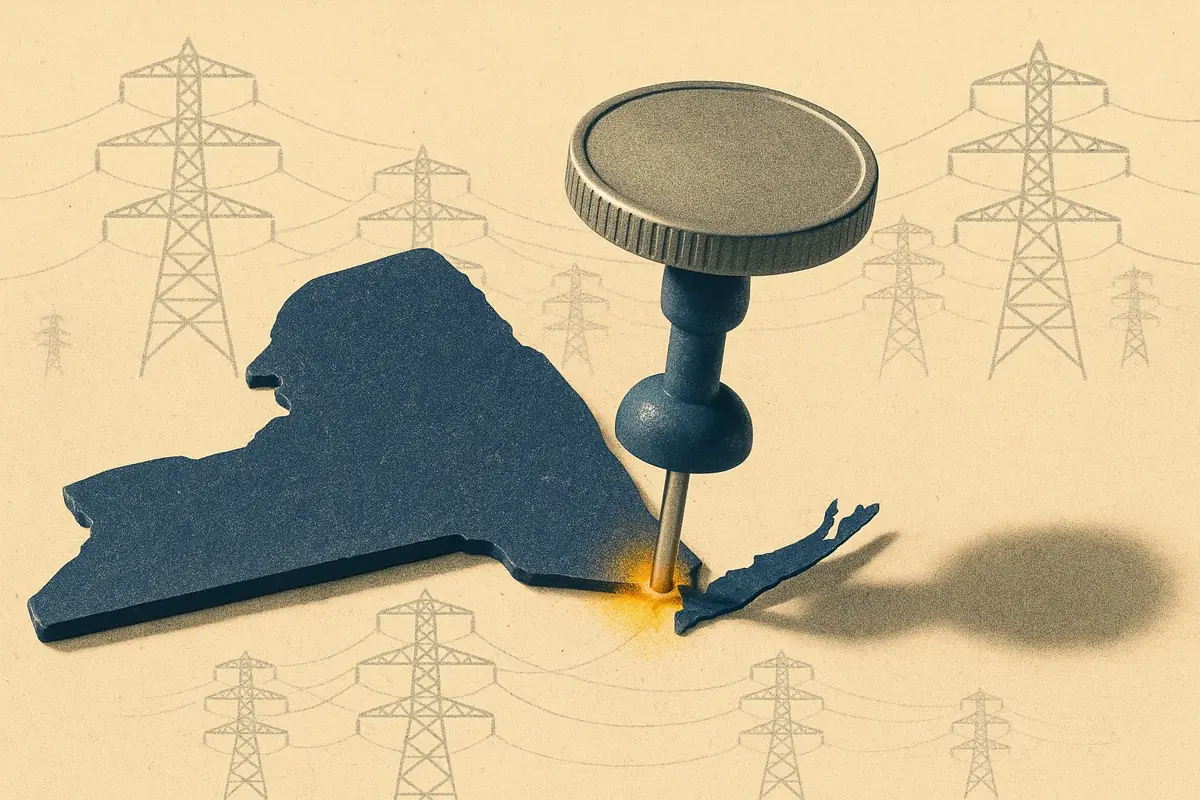As more intermittent renewables come online - at a faster rate than the transmission network can keep up with - they put a major strain on the grid, in the form of congestion. Battery energy storage systems can help to solve this - and benefit from price spreads that occur due to congestion.
But what is congestion? Why has it become more prevalent in recent years? And what does it mean for battery energy storage systems?
Transmission congestion has become a bigger issue in recent years
Transmission congestion occurs when any element of the bulk electric system is either actively overloaded, or at risk of becoming overloaded - as a result of the loss of another element in the system.
Typically, congestion occurs when there’s not enough transmission capacity to import or export power to or from where it's needed. Battery energy storage systems, which can both import and export power, can help to alleviate this.
In recent years, congestion has gotten worse, for a number of reasons:
- The buildout of transmission infrastructure can’t keep up with the buildout of new generation capacity.
- New renewable resources are often located far from the areas of highest demand.
- Wind and solar are intermittent by nature.
- Demand has increased across the state.
From region to region, congestion affects locational marginal prices
When significant amounts of generation (e.g. hundreds of megawatts or more) need to be re-dispatched to resolve congestion, it causes more price variation across the system.
For example, between 7pm and 8pm, average settlement prices in 2023 were 42% higher in Load Zone West than in Load Zone South.

There were two big drivers of this price variation:
- A lack of transmission capacity meant that excess wind generation in South Texas was unable to be exported elsewhere. When generation was curtailed, prices were suppressed.
- As the sun set, solar generation was no longer able to serve large industrial demand in West Texas. This drove prices up, as the region needed to import more power.
With recurring congestion issues like these, prices in a given location can be consistently higher or lower than elsewhere. And this has a knock-on effect for battery energy storage revenues.
Chronic congestion issues can lead to increased price spreads in certain areas
Price spreads in ERCOT were high across all locations in 2023. This was largely due to the increased volatility seen throughout the year. (The standard deviation from the Hub Bus Average prices was 46% higher in 2023 than in 2022.) The key drivers of this volatility were:
- Extreme weather conditions - which contributed to higher system demand.
- Severe and rapid net load ramps (when demand increases alongside a decline in intermittent generation).
Congestion also plays a role in increasing volatility - where it is recurring, and difficult for the economic dispatch to resolve.
More volatility meant that median daily settlement price spreads in most major Load Zones were $75-$85/MWh in 2023.

However, prices in Load Zone West were roughly twice those in other regions, due to multiple chronic congestion issues. The median daily spread was $158/MWh.
The flexibility of battery energy storage systems helps to solve congestion - and leads to arbitrage opportunities
When a region has excess supply (relative to demand), but not enough transmission capacity to export it, it suppresses prices. When this happens, it presents a good opportunity for a battery energy storage system to charge. It also means the excess supply of intermittent renewable generation can be used later in the operating day.
In contrast, if a region struggles to import enough supply to meet its demand, local prices will rise. This incentivizes additional generation located nearby (including batteries) to provide power. Again, this is not only advantageous to those generators - it also alleviates strain on the grid, and helps reduce overall system costs.
The flexibility of batteries means they can capitalize on both of these effects in the same operating day. The same region may see an excess of supply at one point in the day, then struggle to fulfill demand via imports later on. With storage resources (like batteries), that excess supply can be used to fulfill that same demand.
The resulting larger intra-day price spreads mean battery energy storage systems can earn revenues through arbitrage. For example, from January to October 2023, batteries in Load Zone West earned around double the revenues of batteries elsewhere.

Battery energy storage systems are often located to help alleviate congestion
As of the end of 2023, the buildout of batteries in ERCOT has been fairly evenly distributed. However, there are some concentrated areas - usually near major demand centers, intermittent renewable resources, or both.
For example, 53% of batteries are located within 50 miles of major demand centers - Dallas-Fort Worth, Austin, San Antonio, Houston, and the Permian Basin. And, while physical distance doesn’t necessarily equate to electrical proximity, it still shows the perceived value of locating batteries near dense pockets of demand.
Not only does West Texas have a major demand center (in the form of the oil and gas industry that populates the Permian basin), but large quantities of wind and solar generation too.

The most costly individual constraints can change from year to year, but recurring transmission issues tend to persist until widespread infrastructure changes are made.
Traditionally, this has come in the form of transmission network upgrades. However, assets such as batteries and large flexible loads (e.g. data centers and bitcoin mines) offer alternative solutions to congestion. This is largely due to their fast-ramping, price-responsive nature.

For example, batteries located on either side of the Westex GTC can help alleviate chronic congestion. The Westex GTC is a group of transmission lines that ERCOT monitors the total flow across for system stability purposes.
Batteries in West Texas see lower prices when there is active congestion on the Westex GTC, generally due to an over-supply of wind and solar generation. Conversely, batteries located near the demand centers immediately on the other side of the constraint - such as Dallas-Fort Worth and Austin - will see increased locational marginal prices during these same periods.
Congestion is an ongoing issue - and price volatility is likely to continue
Transmission infrastructure is being built at a rapid pace in ERCOT. This will help to serve rapid demand growth, and to solve chronic congestion issues. However, this creates a natural push and pull. When chronic congestion is remedied in one part of the system, it will likely occur elsewhere.
Price volatility in ERCOT is also likely to continue - as the proportion of demand served by intermittent generation grows. The natural flexibility of battery energy storage systems makes them well-positioned to continue acting as a steadying force for the ERCOT grid.








